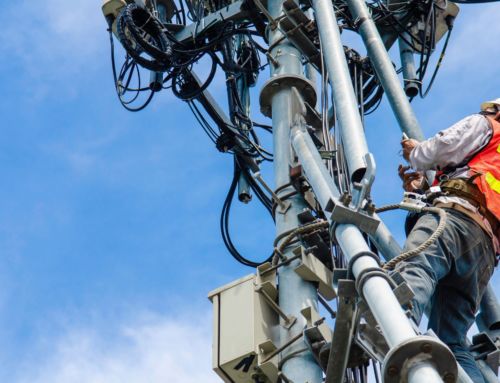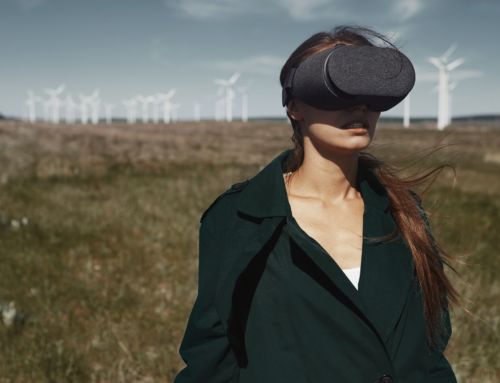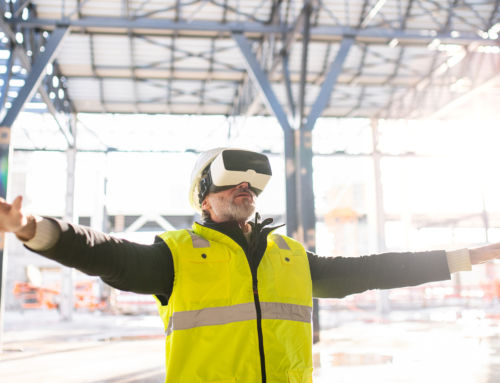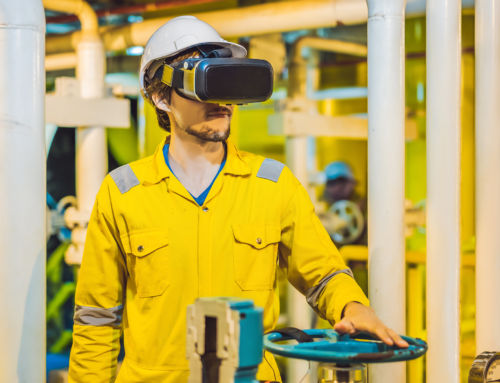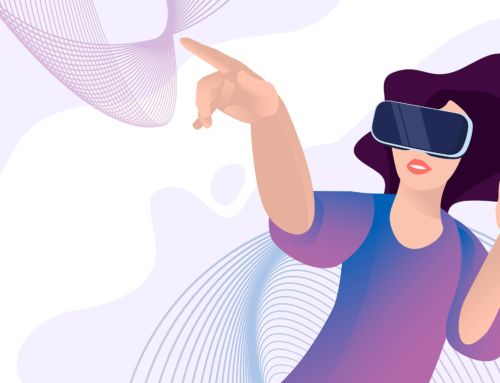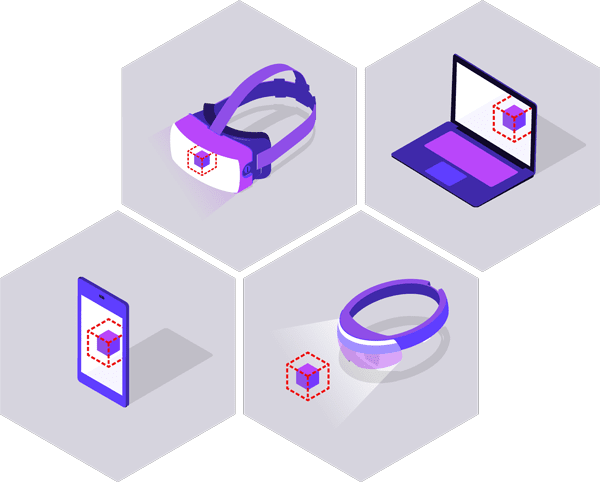Key Takeaways
If you’re scheduled to undergo pilot training anytime soon, it might be advisable to leave the aviators at home. Why? Because chances are you’ll be experiencing your training through a virtual reality (VR) headset.
That may come as no surprise to you. After all, from one year to the next, VR continues to grow as a prominent training tool across all industries, not just aviation. And if recent trends are anything to go by, it doesn’t look like headsets will be packed away be training providers anytime soon.
But why has VR become a go-to device for pilot training? And does it really offer the real-life experience essential for our next generation of pilots? Pull up a seat and let’s find out.
The state of pilot training today
With the world getting busier, the aviation industry can’t keep up with the increased demand for air travel. Part of the reason for a build-up is due to a lack of trained pilots, forcing operators to reduce capacity.
But why is this happening? Why isn’t there more pilots? Well, part of the reason is due to prolonged training programs which can often take upwards of 5 years to complete.
What’s more, training pilots are also required to complete at least 1500 flying hours before they can apply for an ‘unfrozen’ or full Air Transport Pilots Licence (ATPL).
As you can imagine, this all takes a lot of time. But by integrating virtual reality, training times can be significantly reduced while still maintaining the high level of training required for such a highly skilled position.
For validation on how virtual reality can accelerate training, you only need to look as far as PwC’s report ‘Seeing Is Believing’. Among other findings, the report states VR learners master content four times faster than a classroom setting and were 275% more confident to apply learned skills.
It’s a training development that’s already integrated across many flight schools. For example, the U.S. Airforce (USAF) virtual reality program has reduced training time by several months compared to its original graduate schedule. But more on that later.
The case for virtual reality training
By licensing students with more opportunities to fly, instructors can expect to see considerable acceleration in retaining learning and skillsets. Perhaps what’s most convincing is the development of both soft and hard skills as a direct result of virtual reality learning.
For example, hard skills such as aviation, communicating and navigating can all be developed through a headset. From which, students will develop:
- Spatial and situational awareness
- Decision-making and problem-solving
- Workload management and efficiency
- Teamwork and communicating
It encourages students to go beyond perfecting flying manoeuvres and instead provides a platform to practice all the peripheral skills they might otherwise not get enough time to develop.
Ultimately, it means knowledge and practice (hard skills) can be developed through a headset so when students are ready for a reallife cockpit, they’re ready to focus on other hard skills such as aviation, communicating and navigating.
How VR can be used for pilot training
For some training operators, virtual reality has been incorporated into the first four weeks of pilot training schedules. It’s a new approach that allows recruits to get familiar with the flight deck, flight controls and the feeling of take-off and landing – all before setting foot in an aircraft.
Among other benefits, it’s a pathway to accelerate learning where students can safely piece together the core framework of flying in a fully immersive setting. Once training transitions to a real-life aircraft, participants will already have a baseline familiarity of the cockpit.
What’s more, by incorporating VR into pilot training curriculums, students have frequent opportunities to put theory to the test. This is something often criticised with traditional pilot programs, where practical application is perhaps limited due to time, money and logistics.
However, by slipping on a headset, trainee pilots are immediately transported to a cockpit, immersed in a bespoke training program to support and accelerate learning to new heights.
For many, that’s the missing element of modern training: the regular opportunity to develop cognitive, behavioural and psychomotor skills from within the flying chair. But with the right level of integrated technology, it’s safe to say that’s a problem soon to be left in the past.
Of course, a transition to VR will also require some getting use to by training providers, but that’s where specialists like ours at Future Visual can offer support every step of the way. If you want to find out more, get in touch.
Examples of VR in aviation today
It’s no secret virtual reality is the key to accelerated training. Here are several examples of where it’s taking off within pilot training settings.
Embry-Riddle Aeronautical University (ERAU)
By incorporating virtual reality into their pilot training program, ERAU have managed to get pilots in the cockpit 30% faster than traditional methods. This is largely due to the ease of accessible practical training where theory can be applied in a safe and immersive setting.
KLM Airlines
Through a headset, training pilots can become familiar with the cockpit from the comfort of their own home. At their own pace, participants familiarise themselves with the complete flight-deck through a series of simulations and environments to build knowledge, competence and confidence.
Rolls Royce Aviation Engineers
Because air traffic is expected to double by the year 2036, more technicians will need to know the ins-and-outs of engines. Rolls Royce have since responded to demand by integrating VR training. It means trainees can grow their mechanical and engineering knowledge from anywhere with a headset.
The future of flight training
As technology continues to make its mark in the corporate world, more and more industries are integrating virtual and immersive training tools into their curriculum.
We’ve already seen the construction, medical, military and many more spaces take advantage of its benefits. So the question stands: why wouldn’t VR work in the aviation industry?
Well, if you ask us, it’s only a matter of time before headsets become mandatory across pilot training programs. As you’ll have seen from this post, its presence has reached the stage where there’s too many benefits to ignore.
Virtual reality technology continues to push boundaries for what’s possible in flight training. If you’d like to learn how VR can accelerate your training program, feel free to get in touch to book a demo.
Key Takeaways
If you’re scheduled to undergo pilot training anytime soon, it might be advisable to leave the aviators at home. Why? Because chances are you’ll be experiencing your training through a virtual reality (VR) headset.
That may come as no surprise to you. After all, from one year to the next, VR continues to grow as a prominent training tool across all industries, not just aviation. And if recent trends are anything to go by, it doesn’t look like headsets will be packed away be training providers anytime soon.
But why has VR become a go-to device for pilot training? And does it really offer the real-life experience essential for our next generation of pilots? Pull up a seat and let’s find out.
The state of pilot training today
With the world getting busier, the aviation industry can’t keep up with the increased demand for air travel. Part of the reason for a build-up is due to a lack of trained pilots, forcing operators to reduce capacity.
But why is this happening? Why isn’t there more pilots? Well, part of the reason is due to prolonged training programs which can often take upwards of 5 years to complete.
What’s more, training pilots are also required to complete at least 1500 flying hours before they can apply for an ‘unfrozen’ or full Air Transport Pilots Licence (ATPL).
As you can imagine, this all takes a lot of time. But by integrating virtual reality, training times can be significantly reduced while still maintaining the high level of training required for such a highly skilled position.
For validation on how virtual reality can accelerate training, you only need to look as far as PwC’s report ‘Seeing Is Believing’. Among other findings, the report states VR learners master content four times faster than a classroom setting and were 275% more confident to apply learned skills.
It’s a training development that’s already integrated across many flight schools. For example, the U.S. Airforce (USAF) virtual reality program has reduced training time by several months compared to its original graduate schedule. But more on that later.
The case for virtual reality training
By licensing students with more opportunities to fly, instructors can expect to see considerable acceleration in retaining learning and skillsets. Perhaps what’s most convincing is the development of both soft and hard skills as a direct result of virtual reality learning.
For example, hard skills such as aviation, communicating and navigating can all be developed through a headset. From which, students will develop:
- Spatial and situational awareness
- Decision-making and problem-solving
- Workload management and efficiency
- Teamwork and communicating
It encourages students to go beyond perfecting flying manoeuvres and instead provides a platform to practice all the peripheral skills they might otherwise not get enough time to develop.
Ultimately, it means knowledge and practice (hard skills) can be developed through a headset so when students are ready for a reallife cockpit, they’re ready to focus on other hard skills such as aviation, communicating and navigating.
How VR can be used for pilot training
For some training operators, virtual reality has been incorporated into the first four weeks of pilot training schedules. It’s a new approach that allows recruits to get familiar with the flight deck, flight controls and the feeling of take-off and landing – all before setting foot in an aircraft.
Among other benefits, it’s a pathway to accelerate learning where students can safely piece together the core framework of flying in a fully immersive setting. Once training transitions to a real-life aircraft, participants will already have a baseline familiarity of the cockpit.
What’s more, by incorporating VR into pilot training curriculums, students have frequent opportunities to put theory to the test. This is something often criticised with traditional pilot programs, where practical application is perhaps limited due to time, money and logistics.
However, by slipping on a headset, trainee pilots are immediately transported to a cockpit, immersed in a bespoke training program to support and accelerate learning to new heights.
For many, that’s the missing element of modern training: the regular opportunity to develop cognitive, behavioural and psychomotor skills from within the flying chair. But with the right level of integrated technology, it’s safe to say that’s a problem soon to be left in the past.
Of course, a transition to VR will also require some getting use to by training providers, but that’s where specialists like ours at Future Visual can offer support every step of the way. If you want to find out more, get in touch.
Examples of VR in aviation today
It’s no secret virtual reality is the key to accelerated training. Here are several examples of where it’s taking off within pilot training settings.
Embry-Riddle Aeronautical University (ERAU)
By incorporating virtual reality into their pilot training program, ERAU have managed to get pilots in the cockpit 30% faster than traditional methods. This is largely due to the ease of accessible practical training where theory can be applied in a safe and immersive setting.
KLM Airlines
Through a headset, training pilots can become familiar with the cockpit from the comfort of their own home. At their own pace, participants familiarise themselves with the complete flight-deck through a series of simulations and environments to build knowledge, competence and confidence.
Rolls Royce Aviation Engineers
Because air traffic is expected to double by the year 2036, more technicians will need to know the ins-and-outs of engines. Rolls Royce have since responded to demand by integrating VR training. It means trainees can grow their mechanical and engineering knowledge from anywhere with a headset.
The future of flight training
As technology continues to make its mark in the corporate world, more and more industries are integrating virtual and immersive training tools into their curriculum.
We’ve already seen the construction, medical, military and many more spaces take advantage of its benefits. So the question stands: why wouldn’t VR work in the aviation industry?
Well, if you ask us, it’s only a matter of time before headsets become mandatory across pilot training programs. As you’ll have seen from this post, its presence has reached the stage where there’s too many benefits to ignore.
Virtual reality technology continues to push boundaries for what’s possible in flight training. If you’d like to learn how VR can accelerate your training program, feel free to get in touch to book a demo.














